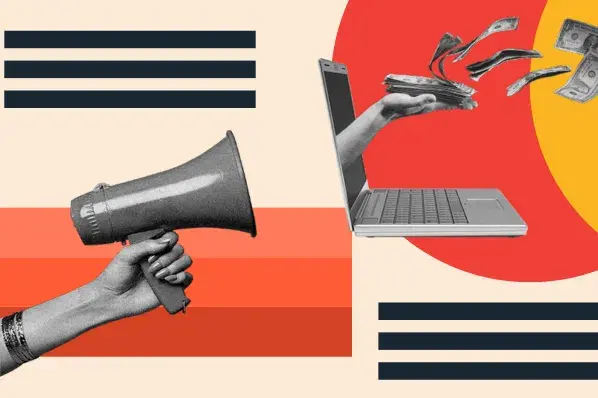If you want to grow your business fast, you need funding to expand the limits of your workforce, inventory, or manufacturing.
There are several ways to gain access to capital, such as self-funding, looking for investors, or taking out a business loan.If the first two aren’t feasible or fell through, then finding a lender is your next best option. But first you need to understand the mechanics of a business loan, and figure out which option is the best fit for your company.
What are business loans used for?
Stocking up on inventory. Opening a new location. Growing your workforce. These are some reasons business owners seek financing through business loans. Lenders regularly offer loans to companies that need help with:
- Cash flow: To keep up with expenses during slow seasons and economic hardships
- Equipment purchase: To repair or replace machinery needed to continue operations
- Property costs: To relocate or pay for current real estate mortgage and insurance
- Growth and expansion: To open new locations or remodel for more space
Business loans open the door to entrepreneurship for people who don’t have a lot of savings, and it keeps the engine churning when tough times hit.
Note that some loans are specific and must be used for a particular expense. For instance, an equipment loan or truck loan can only go toward equipment purchases or truck repairs.
How hard is it to get a business loan?
It’s easier to get a loan and mortgage when you’re already in business and can prove your profitability. Business owners can be denied loans because of poor credit or failing to meet other lenders’ requirements.
New business owners must go the extra mile to prove to lenders they’re worth funding. But the extra hurdles are not impossible to overcome.
Business loan requirements
Lenders create requirements for their loan programs — big banks have different regulations and guidelines than credit unions and smaller banks. However, you’ll find most banks have similar criteria, such as:
- Credit score: Some lenders require higher business and personal credit ratings than others (e.g., SBA loans require a 640, while others want 700+).
- Time in business: New businesses are bigger risks, so the older your company is (2+ years), the easier it is to get a loan.
- Annual revenue: Lenders want to know if your business is profitable and on an upward or sustained trajectory, so they’ll ask to see an audited profit and loss statement (P&L).
- Debt ratio: Having multiple loans and tapped credit lines increases your debt-to-income ratio, which means you have less to spend on new business loan payments.
- Collateral: Sometimes, you can increase the odds of loan approval if you have assets to put on the line (e.g., business real estate, equipment, etc.), in case you can’t pay the loan in the future.
- Personal guarantee: Depending on your business structure, your personal assets may be untouchable during loan defaults (unless you offer a personal guarantee, like using your home as collateral).
How does the business loan process work?
You’re confident you can meet some or all the requirements for a business loan. How do you get started? What does the process look like?
It depends on the type of loan you apply for — some have more paperwork and red tape during underwriting. However, most business loan have similar processes:
- Fill out an application (online or in person)
- Supply requested documents (tax returns, P&L statements, business license, proof of ownership, IDs, etc.)
- Run a credit check (for your business and personal credit score and history)
- Review financials and crunch numbers (to see if you can afford the loan you’re requesting)
- Approve/deny the loan amount you request, or the lender will offer a lower amount
- Sign loan documents stating your business is responsible for repaying the lender
- Receive funding to your business bank account
- Use the funds and begin making payments on the agreed-upon date (usually one to two months after receiving the funds)
When applying for a loan, ask about the process and how soon you’re required to start making payments.
Business loan types
SBA loan
A Small Business Administration loan is available through the US Small Business Administration (SBA). It doesn’t directly lend money to companies — instead, it backs a portion of the loans lenders give to businesses through its program. This reduces the risk for the lender if you don’t repay the entire loan.
There are three common SBA loan programs:
- SBA 7(a): Offers flexible capital options as either a term loan or business line of credit
- SBA CDC/504: Offers funding for major asset purchases, such as real estate
- SBA microloans: Offers loans up to $50k for startups (primarily minority, women, and veteran business owners)
Pros:
- Loan sizes range between $30k and $5m with terms of up to 25 years.
- The minimum credit score is low, starting at 640.
- The interest rates are favorable compared with traditional business loans.
Cons:
- The qualification process is rather tedious, requiring a lot of paperwork and requirements.
- It can take months to determine approval.
- It’s up to the lender to set the credit score, and many banks require a personal score of 680 or higher. If you have a low score, you’ll have to shop for a lender that accepts lower credit ratings.
In general, these loans are an excellent choice for founders looking for debt refinancing, working capital, or to grow their operations. And since it’s government backed, it’s more regulated and less risky.
“I wish we’d gone a different route,” Dr. Bruce Tasios, orthodontist at Tasios Orthodontics, says of his first loan experience. “That particular bank required collateral, so I put my stock account as collateral. Later, I found that wasn’t necessary if we’d gone with an SBA loan."
Tasios also recalls that he would’ve gotten a better interest rate with a SBA loan. When the business fell on hard times, the lender took their collateral to pay off the debt.
“The bank also drained money from other accounts illegally… It was a national bank so we trusted it, but we shouldn’t have. I’d advise going with a small local bank, or a credit union, but certainly going through the SBA or another government program.”
Traditional bank loans
Traditional bank loans, or term loans, are available through large and small banks. Loan terms can be between 18 months and five years, and the amount can range from millions to as low as $50k.
Overall, traditional bank loans work best for businesses with good or excellent credit that need to cover various expenses.
Pros:
- Approval times are generally short, and loan terms are flexible, since they offer different types to match your business needs.
- Some loan options have repayment terms up to 10 years.
Cons:
- Interest rates can be up to 10% or higher — depending on the lender and market rates — so it can be an expensive choice for entrepreneurs with low credit scores.
- Some lenders may require you to supply a personal guarantee or collateral.
Business lines of credit
A business line of credit is like a credit card for businesses. You get approved for a specific amount — for example, $20k per month — and you can borrow (and pay back) up to that amount every month for years. Over time, your line of credit can increase with on-time payments or by requesting a credit limit increase.
This option is ideal for businesses that need working capital, struggle with cash flow issues, or have an emergency. Seasonal businesses — say, ice cream shops — may find it especially useful to cover expenses during the down months.
Pros:
- Can get lines of credit into the millions of dollars, and approval times are quick.
- Even new business owners may qualify.
- Interest rates are favorable with good credit, going as low as 5%.
- You only pay interest on what you used that month (if you don’t pay it off in full each month).
Cons:
- Business owners with poor credit may get interest rates as high as 35%.
- There’s no lump sum payment — you’ll get a small amount to borrow against (depending on your credit), which you can use to cover expenses.
Invoice factoring
Invoice factoring is when a company sells its B2B (business-to-business) invoices to a third party, which then collects from the customer. Invoice factoring works well if your business has a steady stream of sales and collects invoices regularly.
For example, if you have a $10k pending invoice, you can get an advance from an invoice factoring company for up to 70% to 90% (paying you $7k to $9k).
The factoring company will collect the outstanding payment from your customer, deduct a factoring fee (between 0.5% to 5% weekly or monthly), and then give you the rest.
So if their fee is 1% per week (from your original $10k invoice amount) and it takes eight weeks to clear the invoice, the factoring company will take $800 ($100 per week). And you’ll get the remaining $200 to $2,200, depending on the advance amount.
There are two types of invoice factoring:
- Non-recourse factoring: The factoring company agrees to accept liability for unpaid invoices.
- Recourse factoring: Your business is responsible for buying back unpaid invoices.
Pros:
- You can get access to capital fast and fund growth.
- It’s easy to set up and receive funds within 24 hours, since qualification is simple.
- As your customer base grows, you can get higher funding.
Cons:
- Your customers must have a good credit standing with your business (e.g. history of on-time payments).
- The fees associated with invoice factoring are high, especially for late payments.
Overall, this method is ideal for businesses that need to increase cash flow, especially when payments come in slowly.
Business loan repayment process
You selected the business loan you want. Now it's time to ensure on-time repayment — and the process varies depending on the loan product and its conditions.
Installment loans have a term (e.g., one year, five years, 15 years) and a set amount the company must pay each month. You can choose to pay more than that amount to get rid of the debt faster and reduce interest charges (since interest accumulates monthly or annually).
If you have a business line of credit, then it’s based on your credit usage. For example, if you have a line of $50k and spend $10k one month, then your minimum payment each month may be $250. But be mindful that interest accumulates the longer you take to pay back the $10k.
You can continue using more credit, up to the $50k. Once you max it out, you can’t take out more until you pay back some or all of the money. You get what you put in — if you pay back $1k, then you’ll immediately have access to borrow $1k.
Whatever loan product you choose, review your contract to understand the interest rates and monthly payments or minimums required.
Also, analyze what happens if you miss a payment — how much will you pay in late fees? And after how many days of nonpayment will the loan or credit line default? When this happens, it’ll negatively impact your credit score. Some lenders consider an account seriously delinquent once it’s 90 days past due.
Before agreeing to a business loan, ask lots of questions to know how to keep your debt in good standing. To be safe, consult a business finance adviser to learn the best loan options for your unique situation.
What did you think of this article?
Business Growth






![How Entrepreneurs Navigated (& Survived) Recessions [New Data & Expert Tips for Economic Slumps]](https://53.fs1.hubspotusercontent-na1.net/hubfs/53/Copy%20of%20Featured%20Image%20Template%20Backgrounds%20(55).png)


![Grants for Black-Owned Businesses and Other Funding Resources for Black Business Owners [+ Deadlines for 2025]](https://53.fs1.hubspotusercontent-na1.net/hubfs/53/copy%20of%20jade%20walters%20btb%20(41).png)

%20(1)-1.png)

![Here's How to Value a Company [With Examples]](https://53.fs1.hubspotusercontent-na1.net/hubfs/53/Value%20a%20Business%20fi%20(1).png)

